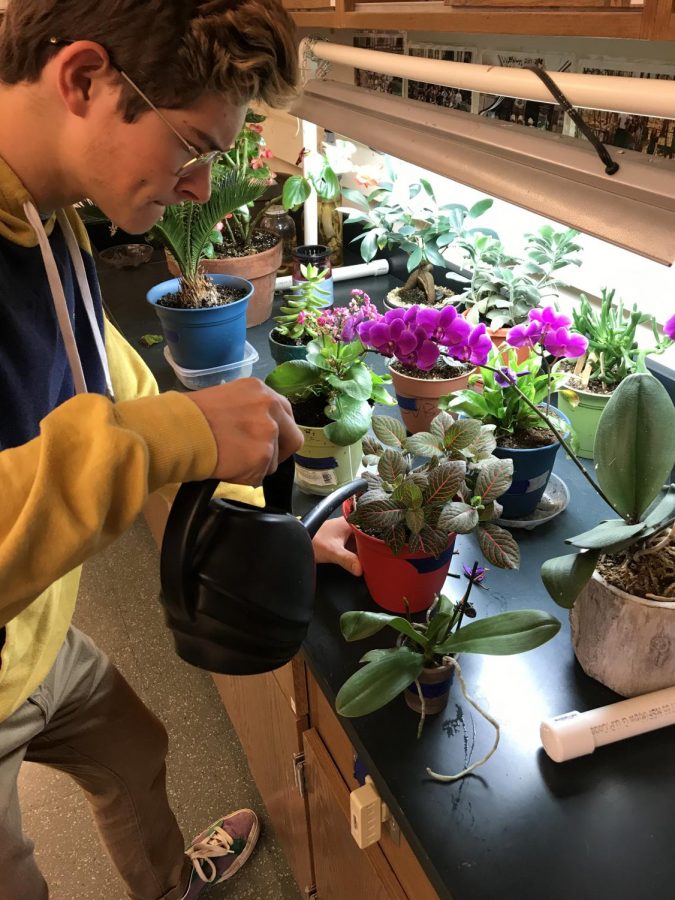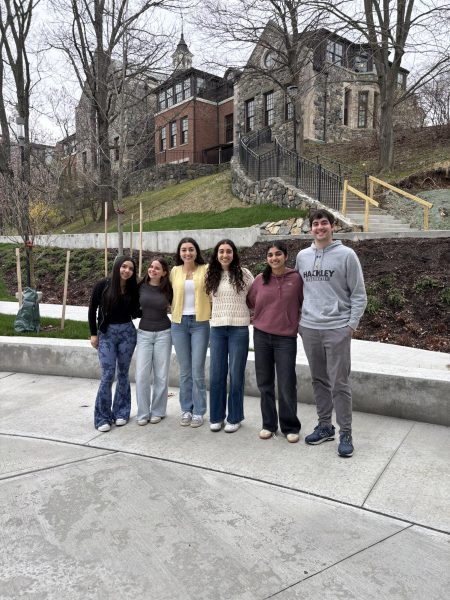AP Biology students turned gardeners: plant project connects class to nature
Credit: James Sexton-Holtmeier
Senior Ben Marra diligently waters his nerve plant. Native to South American rain forests, nerve plants are known for white and pink veins on their leaves.
Although AP Biology students are working countless hours studying evolution and the nature of life, these students also have a light, fun project where they can explore the world of plants. At the beginning of the year in September, students pick their own plants to take care of throughout the year. Spurring great competition among the students, this project requires students to do research on their respective plants with only one goal in mind: survival.
AP Biology teacher, Ms. Johnson, introduced this project to her students during the 2007-2008 school year. Johnson feels it is a pleasurable experience, and also an educational one. It forces students to think about the evolutionary aspect of the plant and its role in nature. Ms. Johnson was originally worried about the students’ familiarity with plants. She stated, “I started this because I am an avid gardener and was surprised that many of my students have little experience with plants.” Johnson wants her students to love and feel comfortable with the flora.
Ms. Johnson also compromised with students due to the difficulty of AP Biology. This project counts as a quiz grade at the end of each trimester, so students don’t have to worry about that one, maybe more than one, abominable quiz grade. Ms. Johnson is proud of the initiative these students take, even after they have graduated. One student, she noted, is now married and kept that same AP Biology plant with them when they relocated to Florida!
Earlier this month, students had an exciting “draft” choosing which plant they would take care of for the year. When the plants were displayed on the table, the cunning students tried to coax their peers to pick other plants. The draft was a surprisingly orderly process, with students weighing the pros and cons of the plants on the table. Students joked about trading their plants or sabotaging the plants of others.
AP Biology students were intimidated by the project when it was first introduced They didn’t know what to make of it and were nervous that their plant was going to die. However, over the course of the first month of school, AP Biology students settled into the difficult class and currently enjoy taking care of their respective plants.
Senior Liam Murphy is excited about the project because this is the first time in this class that he can work independently. He stated that this project “is a chance to explore the real world and nature of biology and that a lot we have learned in the classroom can be applied to this project.” Murphy has done extensive research on his plant and is watering it weekly.
Senior Emily Afriyie was attracted to the aesthetics of her plant. She was attracted to the African violet because of its “vibrant purple color.” Regarding the upkeep of her plant, Emily stated that “to keep my plant alive, I had to research the watering patterns the African violet followed, how much water the plant would need, the special type of soil meant for it, how often it would need plant feed, and lighting preferences of the plant.”
Emily is looking forward to learning more about her plant and to expanding her knowledge of biology into a world of gardening.
With this plant project, AP Biology students are turning into full fledged gardeners.











